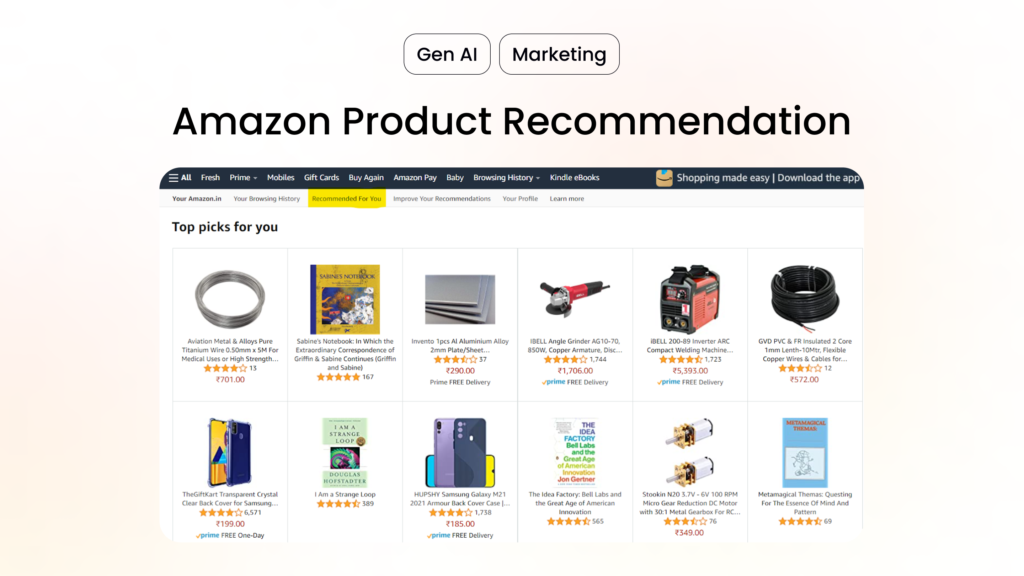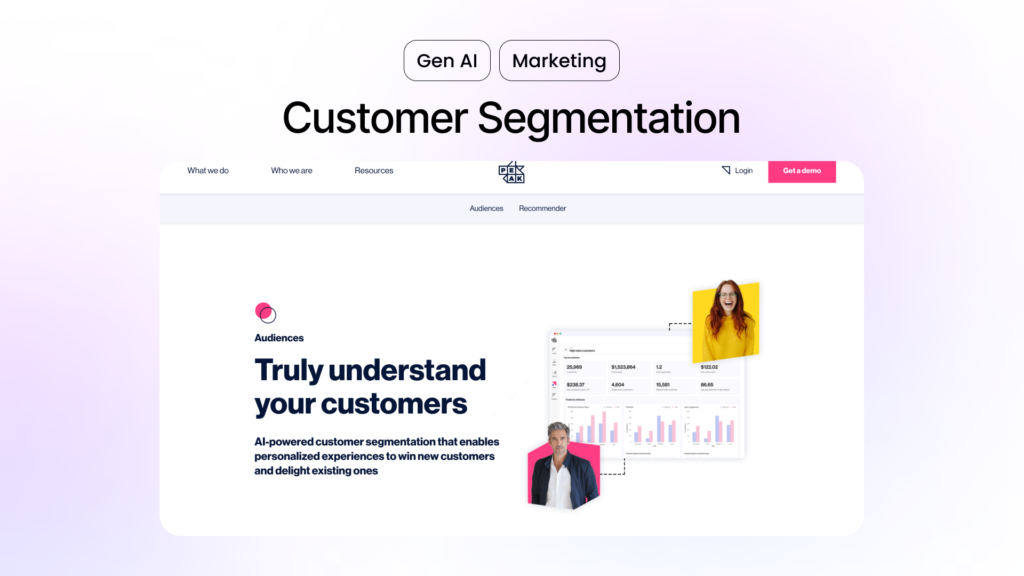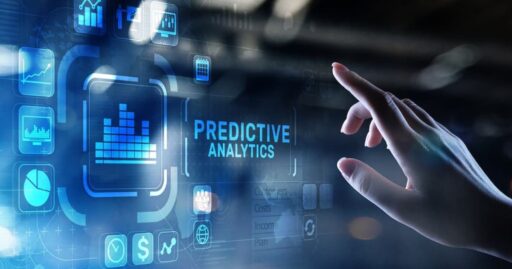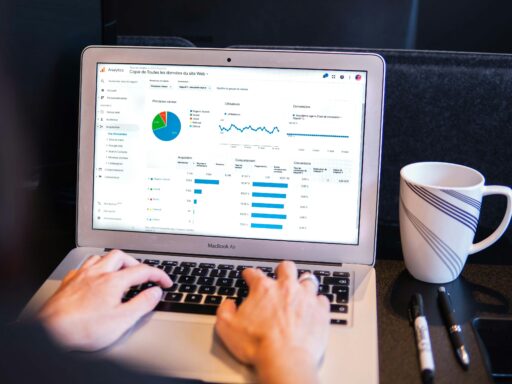In the digital era, data is the lifeblood of marketing. Digital marketers harness the power of data to derive insights, drive engagement, and optimize campaigns for maximum impact.
Predictive analytics is a cutting-edge methodology in Marketing that uses Artificial Intelligence (AI) to make informed decisions and decode complex data patterns. It examines past data with statistical algorithms and machine learning methods to anticipate future events or consumer actions.
In marketing, predictive analytics is the guiding compass that deciphers consumer preferences, refines ongoing efforts, foresees behaviors, and shapes future initiatives with pinpoint accuracy.
In this article, we’ll delve into the cutting-edge world of predictive analytics in marketing. Discover how AI empowers marketers to predict customer actions, tailor campaigns, and ultimately achieve greater engagement and success. Join us as we explore the future of marketing intelligence.
The Power of Predictive Analytics in Marketing
Imagine a scenario where Procter & Gamble, a leading FMCG company, leverages predictive analytics to dissect past purchasing behaviors and seasonal trends for their popular product, Tide laundry detergent.
By doing so, they can accurately forecast the demand for Tide during the next holiday season, enabling them to optimize inventory levels and tailor marketing strategies accordingly. This foresight reduces the risk of stockouts or overstocking, directly enhancing the bottom line.
Predictive analytics transcends basic pattern recognition, facilitating data-driven predictions about future consumer behaviors.
For instance, an e-commerce platform might deploy predictive models to identify customers likely to abandon their shopping carts. By sending targeted reminders or personalized offers, they can significantly mitigate cart abandonment rates.
McKinsey’s report highlights that companies investing in AI experience a revenue uplift of up to 15 percent and a sales ROI increase of up to 20 percent. Predictive analytics with AI in Marketing is instrumental in achieving these gains by:
- Demand Forecasting: Utilizing tools like Google Cloud BigQuery or Alteryx, businesses can analyze historical sales data and market trends to predict future demand. This allows for optimized inventory management, production schedules, and marketing campaigns.
- Customer Churn Prediction: Platforms such as Adobe Marketing Cloud or Salesforce DMP can identify customers at risk of churn by analyzing their past behavior and engagement levels. This empowers businesses to launch targeted retention campaigns and loyalty programs, enhancing customer retention and satisfaction.
Understanding Customer Behavior with Predictive Analytics in Marketing
Customer behavior in the digital age is significantly shaped by the pervasive influence of digital media. The sheer volume of available information presents a unique challenge in how consumers receive and process data. Predictive analytics plays a pivotal role in deciphering these behaviors, offering valuable insights into what drives consumer decisions.
Key Influencers of Customer Behavior Using Predictive Analytics in Marketing
- Information Abundance: Today’s consumers are more informed than ever, extensively researching before making purchasing decisions. Predictive analytics enables marketers to pinpoint which types of information are most influential in the decision-making process, allowing for more targeted content strategies.
- Multi-Channel Engagement: Maintaining a cohesive marketing strategy across various touchpoints is crucial. Predictive analytics can identify which channels—social media, email, search engines, etc.—are most effective for engaging customers, allowing brands to allocate resources more efficiently and maximize impact.
- Empowerment Through Reviews: Online reviews are a powerful factor in purchase decisions. Robust reputation management is essential, and predictive models can help businesses anticipate trends in customer feedback, enabling proactive responses to maintain a positive brand image.
- Instant Gratification: Modern consumers expect swift responses and quick access to information. Predictive analytics can optimize customer service by predicting peak times for inquiries and ensuring resources are allocated to meet demand, enhancing overall customer satisfaction.
- Personalization: Personalized experiences are highly valued by consumers. Major tech companies leverage machine learning models to deliver highly tailored experiences, setting a standard for personalization. Predictive analytics allows businesses to analyze customer data and preferences, enabling them to offer personalized recommendations and communications that resonate on an individual level.

Incorporating these insights, Predictive analytics allows marketers to better understand and anticipate customer behavior, leading to more effective and personalized marketing strategies.
Turning Data Into Insights with Predictive Analytics in Marketing
AI-powered analytics can uncover hidden patterns within vast datasets that traditional methods might miss. Here’s how:
1. Customer Segmentation
Predictive models can segment customers based on their predicted behavior, allowing for targeted marketing campaigns with personalized messaging and offers. This enhances customer engagement and increases conversion rates.

2. Next-Best-Action Recommendations
AI can analyze real-time customer interactions and recommend the most effective next steps, such as suggesting relevant products or providing personalized support. Marketing platforms like Salesforce Marketing Cloud, Braze, or Adobe Marketo can automate these recommendations based on predictive insights.
3. Dynamic Pricing
Analyze real-time market data and customer behavior to adjust prices dynamically, maximizing revenue while maintaining customer satisfaction. For instance, a ride-sharing service can use real-time data on traffic patterns and user demand to surge pricing strategically. This ensures efficient resource allocation while providing a seamless experience for users willing to pay a premium for faster service during peak hours.
4. Personalized Online Advertising
Platforms like Adobe Experience Cloud or Google Marketing Platform can leverage predictive models to analyze user data and deliver targeted advertising in real time, increasing the effectiveness of ad campaigns. For example, an online retailer can use predictive analytics to serve personalized ads to users based on their browsing history and purchase behavior, leading to higher click-through rates and conversions.
Understand Your Customer Data With Predictive Analytics in Marketing Today
Predictive analytics powered by AI is transforming the marketing landscape. By enabling marketers to anticipate customer behavior, optimize marketing efforts, and personalize customer experiences, predictive analytics is becoming an indispensable tool for businesses aiming to stay competitive in today’s digital world.
The integration of predictive analytics in marketing strategies not only drives efficiency but also enhances the ability to make informed, real-time decisions that can significantly impact business outcomes. As businesses continue to invest in AI and predictive analytics, they unlock new opportunities for growth and innovation.
Are you ready to harness the power of predictive analytics in your marketing efforts? At Innovators, we get to know your business and help leverage your Marketing strategy with the right AI and Generative AI technologies. Connect with us today!






